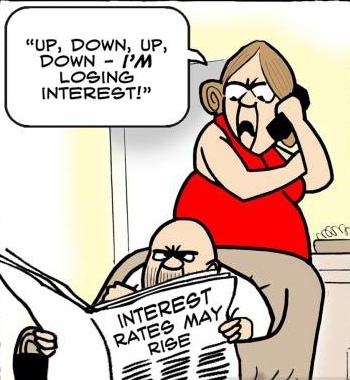“This single report will not necessarily result in the Fed changing tack on its view of policy tightening this year,” Millan Mulraine, a research strategist at TD Securities USA LLC in New York, wrote in a note after the report. “What it will do is weaken the argument for a mid-year hike and it will place a greater premium on the next few employment reports as the Fed looks for evidence that the relapse in economic growth and labor market momentum is temporary.”
Mulraine maintained his projection for an increase in September, though he said the “balance of risks” is shifting to a later start. Policy makers will get two more employment reports before their meeting on June 16-17, when they will also release new economic and interest-rate forecasts.
Fed officials in March lowered their median estimate for the main rate at the end of 2015 to 0.625 percent, compared with 1.125 percent in December forecasts. The estimate for the end of 2016 fell to 1.875 percent from 2.5 percent, according to the Federal Open Market Committee’s quarterly Summary of Economic Projections.
The weak payrolls number could cause FOMC members to turn increased attention to jobs data and away from inflation “at the margin,” said Ray Stone, managing director at Stone & McCarthy Research Associates in Princeton, New Jersey.
He said they’ll have to see if the U.S. returns to its strong job-adding streak. “Even though we had a downshifting here, I think the FOMC has to be pretty satisfied with the broader trends in employment.”
Full Employment
The jobless rate held at a six-year low of 5.5 percent in March, near the level policy makers estimate for what constitutes full employment. Most project it’s equivalent to a 5 percent to 5.2 percent unemployment rate, down in March from the 5.2 percent to 5.5 percent range they had in December.
Because it’s difficult to tell how Fed officials will react to a single month of weak jobs data, this report makes it even harder to project the central bank’s next move, Jim Baird, partner and chief investment officer for Plante Moran Financial Advisors in Southfield, Michigan, wrote in a note.
“This data does more to muddy the waters of expectations than provide clarity around policy makers’ next steps,” he wrote.
The outlook appears more upbeat to Karen Dynan, the Treasury Department’s chief economist and a former top researcher at the Fed board during a 17-year career there. “Domestic fundamentals look strong” and the world’s largest economy remains poised for above-trend growth in 2015 even after the March slowdown in jobs creation, Dynan said in an interview in Washington following remarks at a Fed conference.
The economy expanded at a 2.2 percent annualized pace in the fourth quarter. First-quarter growth probably was 2 percent, according to a Bloomberg survey of economists. The slowdown can mainly be blamed on severe winter weather, according to 18 of 37 economists in a separate survey conducted this week.
The odds on the Fed increasing interest rates, one way or the other, have decreased. Should this really impact markets? Moot question. It does.

